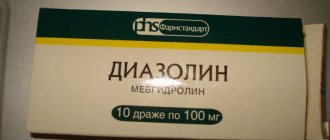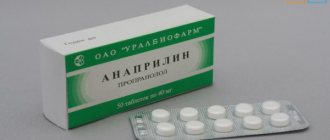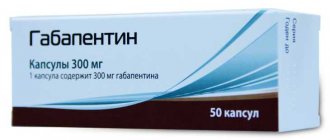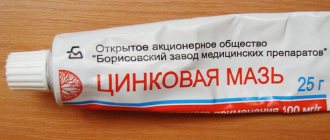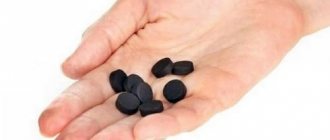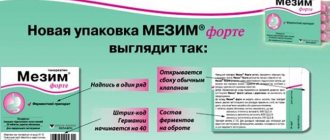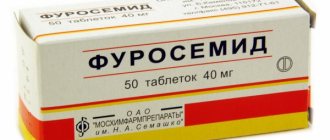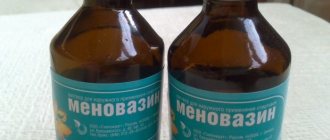Indications
Many people are interested in what Smecta helps with.
The main indications for taking the drug are signs of pathologies of the stomach and intestines. Today, the remedy is often used as part of a complex treatment of intestinal dysbiosis. After entering the body, the ingredients of the substance actively absorb pathogenic bacteria. However, they do not affect beneficial microorganisms. Thanks to the use of Smecta for diarrhea, it is possible to minimize the volume of E. coli and Escherichia.
In addition, Smecta helps to cope with the following conditions:
- Dyspeptic symptoms of enzymatic nature;
- food allergies;
- rotavirus;
- heartburn with ulcerative lesions of the stomach and duodenum;
- food poisoning;
- pain with colitis;
- toxicosis during pregnancy;
- flatulence.
Smecta is also used for diarrhea, which is caused by poor diet or the use of low-quality products. The drug can be taken for diarrhea of drug and allergic etiology.
The use of a substance is usually an element of complex therapy. So, in case of food poisoning, which is accompanied by nausea and vomiting, it is necessary to remove toxins from the digestive organs. To do this, rinse with water. Then you need to take Smecta and medications to restore electrolyte balance. These include, in particular, Regidron.
Therapeutic properties
The medicine “Smecta”, which helps with stomach and intestinal disorders, well absorbs and removes pathogenic microorganisms, intestinal gases, and toxic substances from the body. The medicine has excellent enveloping properties, high viscosity and plasticity. By acting on mucus, the drug increases the protective function of the mucous membrane, protects it from the influence of bile acids and toxic substances.
The drug prevents the loss of electrolytes and fluids from the body. The medication is a natural aluminosilicate that has antidiarrheal and adsorbent effects. The active substance does not stain the stool and is excreted from the body in its original form. The drug stabilizes the mucous barrier, stimulating the cytoprotective properties of mucus.
Adviсe
Although Smecta is considered a safe drug for children, which allows it to be given even to babies under one year old, the child should be shown to a pediatrician before using the medicine. The causes of loose stools are different, some of them will not be affected by taking the sorbent, and time will be lost, which poses a danger to the health of the little one (this is especially dangerous for).
If a child has been diagnosed with poisoning, it is recommended to rinse the patient’s stomach before using Smecta. This will free the child’s body from toxic substances and increase the effectiveness of smectite.
It is these medications that pediatricians consider the basis of treatment if a child has diarrhea or vomiting, and Smecta is only their supplement. Such medications include Gidrovit, Gastrolit or Humana Electrolyte. In addition to them, the child can be given compote, fruit juice, mineral water, tea or any other liquid.
How long does it take for smecta to work?
The average absorption time of the product is 30-60 minutes
. But in case of poisoning, the absorption function in the intestines is often impaired, which is why it will take longer for the drug to take effect.
Usually the patient feels significant relief from his condition after 2-3 doses (by the end of the first day of treatment). To completely remove toxins, you need to drink Smecta for at least 3 days. The product effectively treats food, chemical and other types of poisoning.
How long it takes for the remedy to take effect depends on the symptoms. If the patient has severe vomiting, the drug may come out without having time to have a therapeutic effect. In this case, it is recommended to take it after gastric lavage or if there is no vomiting for at least half an hour. Another way is to dissolve the powder in a small amount of water (50 ml).
How long it takes for the medicine to take effect also depends on how full the stomach is. If you take it for stomach pain after eating, the effect will be delayed.
It is much more effective to drink it an hour before or an hour after a meal - this makes the drug more effective.
Related article: What are sorbents and what drugs belong to them?
Directions for use and doses for children and adults
How to breed Smecta? Children and infants (from birth) should dissolve the contents of one sachet in 50 ml. bottle, in warm water or baby formula, compote, puree, porridge, gradually adding and evenly mixing the powder until a homogeneous liquid or puree is formed.
If the child is not able to drink that much, it can be diluted in a smaller amount of water or given in several doses. But the product should be diluted immediately before use, and not stored in the bottle for several hours. If your child does not like the taste and smell of the drug, try replacing it with a softer Neosmectin.
For adults, the powder should be dissolved in 0.5 glass of warm water, also with gradual addition and thorough stirring of the powder.
How to drink Smecta? The drug must be taken 3 times a day in a dosage according to the severity of diarrhea, usually the course should be at least 3 days and no more than 7 days. Since Smecta powder is an enterosorbent, the optimal effect is achieved when it is consumed between meals, with the exception of using the drug for esophagitis (heartburn) - after meals.
- 1-2 sachets per dose
- 1-6 sachets per day
- from a single dose to 7 days (average 3-5 days)
Considering its adsorption properties, Smecta should not be taken simultaneously with other medications, so as not to reduce the absorption of the drug.
For acute diarrhea:
- Infants up to 1 year: 3 days, 2 sachets/day, then 1 sachet/day
- Children over 1 year: 3 days, 4 sachets/day, then 2 sachets/day
- Adults - up to 6 sachets/day
For other diseases:
- Infants up to 1 year: 1 sachet/day
- Children 1-2 years old: 1-2 sachets/day
- Children over 2 years: 2-3 sachets/day
- Adults: 3 sachets/day
USE IN CHILDHOOD IS IT POSSIBLE TO GIVE SMEKTA TO INFANTS HOW TO BREED
This drug is well tolerated by infants.
For a child under one year old, it is enough to give 1 sachet per day during meals, after dividing it into two parts. According to the instructions for use, newborn children aged one year and older can be given the contents of 2 sachets three times a day, after dividing it into three equal parts. Unlike infants, adolescents can be given an adult dose of the drug during or after meals. How to dilute the drug can be found in the instructions.
Smecta for children should be diluted in milk, porridge or puree, especially since flavors (orange, vanilla) are added to the children's version of the drug so that it is easier for the child to perceive. Only medicine for children should be mixed into the food immediately before starting a meal, otherwise it may adversely affect the food by reacting with the food (sourness, unpleasant odor and taste).
For newborns and older children, you can also prevent loose stools by giving them a bag of Smecta once a week.
Smecta suspension instructions for use
How should the suspension be given to an infant according to the instructions?
Before using the drug, you must carefully read the attached instructions for use. In it you will see that a child under one year of age can drink no more than one sachet of contents per day.
For a newborn baby, the drug can be diluted in formula or milk. For older children, you can add the suspension to purified water at the rate of 1 sachet per 100 milliliters of liquid.
In what quantities is Smecta given to a child under one year of age? Instructions for use for children include the following features:
- It is necessary to take the medication in courses. The duration of each course varies from 3 to 7 days, depending on the severity of the condition. As for longer-term use, this is contraindicated.
- A single dose of the suspension varies from 20 to 25 ml. If a child has severe poisoning, then if absolutely necessary, the dose can be increased. In such situations, it is necessary to give the newborn two sachets of Smecta on the first day of manifestation of the disease.
- It is advisable to give the finished suspension to children in equal parts throughout the day. One sachet is usually enough for 3-4 doses.
If other medications have been prescribed to a child under one year of age, they should be given several hours before taking Smecta or after
It is worth taking into account that the drug has an absorbent effect and weakens the effects of other drugs
When taking medications, you should follow the prescribed norms, otherwise the child may experience constipation. For newborns, the drug can be poured into a bottle, and for children up to six months and one year old, it can be given using a spoon.
If the baby refuses to take the suspension, then you can resort to a trick and use a syringe without a needle. With its help, it is much easier to pour all the contents into the baby’s mouth.
How to properly prepare a suspension for a newborn? The proposed composition should be prepared so that lumps and various compactions do not form. The suspension must be completely homogeneous. To do this, you should first prepare the liquid, into which you need to pour the powder in a thin stream. During the treatment course, the child must be given purified water.
Release form
The drug is produced in France in the following two easy-to-use forms:
Powder. It has a gray-white or gray-yellow color and also has a faint vanilla smell. This powder in an amount of 3.76 grams is placed in laminated paper bags. After mixing with water, it forms a cloudy gray-yellow or gray-white suspension. Depending on the taste of the finished medicine, this Smecta can be orange or vanilla. The most popular packaging of this medication is boxes of 10 sachets. Larger packages are also produced, containing 30 sachets of Smecta.
Active components of the drug
This medicine is made only from environmentally friendly materials that undergo special processing in the laboratory. It is not allowed to add to the composition of the drug those components that can cause allergic skin reactions, therefore it can be used even by a child.
It is believed that smecta is a universal adsorbent, it acts quite quickly, and does not in any way disrupt the body’s normal metabolism. One of its active components is considered to be diosmectite. It is made from special shell rock, which is found in Sardinia and its surroundings. At the same time, this organic substance undergoes special processing for further safe use.
The powder also contains the following substances:
Organic fruit flavors
They do not irritate the intestinal mucosa and do not cause allergic reactions, so even newborns can drink smecta.
Manufacturers offer the drug in two flavors - vanilla and orange, which provides gustatory pleasure when taking it.
Sodium saccharinate
This is a natural sugar substitute, so this substance can be used even by people suffering from diabetes. At the same time, smecta is suitable for newborns, since this substance is eliminated from the body quickly enough and in its original form.
Dextrose monohydrate
Smecta does an excellent job of treating vomiting and diarrhea, largely thanks to dextrose monohydrate, since it is made from glucose. It affects the acceleration of the deception of substances, in addition, it can replenish the supply of sugar in the blood when it is deficient.
The suspension gently envelops the walls of the gastrointestinal tract, has a slightly thick consistency due to its composition, and quickly settles to the bottom
That’s why experts pay attention to the fact that you need to drink this substance quickly enough.
The medicine is excellent for preventing dysbiosis and eliminating acute symptoms of diarrhea. Instructions for use must be followed in full; it is necessary to take into account the required dosages of the drug, without exceeding their norms. In such cases, it becomes more effective for any type of diarrhea.
What does Smecta help elderly patients with and in what cases can they take it?
The drug can also be taken by older people. But this should be done with caution if you have a tendency to constipation, which happens quite often in old age.
Related article: How to replace Enterosgel? Analogues for adults and children
Smecta has a constipating effect and can lead to severe constipation. In this case, it is necessary to either reduce the dosage or replace Smecta with analogues - use Bifiform, Polysorb, Motilium and others.
Bifiform
Motilium
Polysorb
Smecta helps with overeating, eating highly fatty foods, while taking a large number of medications - which worsens the condition of the intestinal microflora.
Use during pregnancy
A study of the effect of the drug on fetal development did not reveal any negative effects, and the lactation period is not a contraindication to the use of Smecta. Therefore, during pregnancy, the use of this drug is allowed, since it is not absorbed into the blood and does not affect the fetus.
This is a mild remedy for flatulence, bloating, and heartburn during pregnancy, but due to the risk of constipation, it is better to take it once and not preferably for more than 3 days. If diarrhea occurs in a pregnant woman, the cause should be determined and the drug should be used only as prescribed by a doctor. In this case, no adjustment of the dosage regimen or regimen is required.
Side effect
Allergic reactions; with prolonged use or overdose, constipation may occur.
Drug interactions
Like any energy sorbent, the drug reduces the degree and speed of absorption when taking medications simultaneously, so you cannot take other medications at the same time.
special instructions
Smecta powder should be used with caution in patients with a history of severe chronic constipation. Be sure to observe an interval of 1-2 hours between meals and use of the drug.
In case of acute diarrhea in adults, children, especially infants, a set of rehydration measures must be carried out, which are prescribed depending on the age, nature, severity of diarrhea and the individual characteristics of the patient.
Storage conditions
Storage temperature should not exceed 25C, in places inaccessible to children.
Best before date
Do not use for more than 3 years from the date of manufacture of the drug.
Manufacturer
France, Bofur Ipsen Industry, 28100, Dreux, Rue et Virton
The site provides reference information for informational purposes only. Diagnosis and treatment of diseases must be carried out under the supervision of a specialist. All drugs have contraindications. Consultation with a specialist is required!
Some features of Smecta
If a woman is in the period of bearing a child or lactation, then the use of Smecta is quite acceptable - the studies did not reveal any negative effect of the active substance of the drug in question on the intrauterine development of the fetus or on a newborn who is breastfed . During pregnancy, Smecta can be used for bloating, heartburn or flatulence, but since it can cause constipation, doctors recommend not to get carried away with the drug and limit its use to 3 days in a row. No dosage adjustments are required when using Smecta during pregnancy or lactation.
If the drug in question is taken for a long time, the person may experience constipation. Another caveat is that frequent/long-term use of Smecta can provoke an allergic reaction - the patient may develop hives, itchy skin, and small rashes.
Note! If Smecta is used specifically for the treatment of diarrhea, then you need to be aware of one nuance - you need to drink a dose of the finished suspension 1-2 hours after eating.
The shelf life of the medicinal product in question is 3 years after the date of manufacture; there are no special instructions regarding the storage of Smecta in the instructions - it is enough to isolate children’s access to the drug and prevent the temperature in the storage area from rising above 25 degrees.
Smecta is considered one of the safest medications. But even with such characteristics, it is necessary to strictly follow the recommended dosages in order for the expected effect to be achieved. If after taking 1-2 powders of the drug in question, diarrhea does not become less intense, and pain in the intestines and flatulence do not disappear, then this is an absolute reason to seek qualified medical help.
Tsygankova Yana Aleksandrovna, medical observer, therapist of the highest qualification category
66, total, today
( 173 votes, average: 4.61 out of 5)
Effective medicines for sore throat: review of remedies
Doxycycline: use in children, dosage, side effects
Related Posts
Compound
The main component of both forms of the drug is called dioctahedral smectite. One package of powder or suspension contains it in a dose of 3 grams. When making the powder, dextrose monohydrate and vanilla and orange flavors (in an orange medicine) or vanillin (in a vanilla-flavored medicine) are added to smectite. The sweetness of the powder form of Smecta is also due to the sweetener - sodium saccharinate.
Additional components of the finished suspension are ascorbic and citric acid, potassium sorbate, purified water and xanthan gum. The sweet taste of this version of Smecta is provided by sucralose, and the pleasant smell and taste is provided by caramel and cocoa flavoring.
Composition of the drug
The active ingredient is dioctahedral smectite or diosmectite. This is a natural clay that contains magnesium and aluminum salts (silicates), which changes the physicochemical properties of the mucus lining the digestive tract. By thickening mucus and making it more viscous, diosmectite relieves the frequent urge to empty the bowel and increases stool consistency.
Diosmectite has a very high ability to absorb (due to its structure and viscosity) acidic secretions and thus helps protect the intestinal mucosa from toxin aggression and reduce inflammation. Due to its absorbent and protective effect on the intestinal mucosa, diosmectite reduces the absorption of nutrients and certain medications, so it is recommended to use it after eating or taking another medication.
Read on the topic: Bentonite clay properties and applications
Additionally, the drug contains flavorings, sodium saccharinate and dextrose monohydrate. Excipients are necessary for better absorption of the medication and providing a therapeutic effect. The pleasant taste of orange or vanilla allows children to drink the medicine with pleasure.
pharmachologic effect
Immediately after birth, the organs of the newborn’s digestive system do not contain beneficial microflora. However, it is precisely this that ensures the proper functioning of each of the digestive organs, optimal perception of food, all vital substances, and microelements. The body of a newborn baby is characterized by the absence of protective mechanisms that block infections of a viral and bacterial nature. The likelihood of pathogenic microorganisms entering the body increases significantly, which leads to dysbacteriosis.
The active component of the drug Smecta is a substance that is part of purified (three-phase) volcanic light clay mined in Sardinia, we are talking about dioctahedral smectite. This drug helps attract and retain polar molecules, that is, it has adsorption properties. The drug is not absorbed by the mucous membranes of the digestive system and does not enter the circulatory system, therefore it is prescribed not only to newborn infants, but also to pregnant and lactating women during lactation.
As Smecta passes through the digestive system of a newborn, it helps restore water-salt balance, as well as eliminate toxins, harmful substances, and pathogenic microorganisms. At the same time, healthy microflora are not negatively affected, and the drug is naturally completely eliminated from the body. This medicine is an effective prophylactic for the first symptoms of dysbiosis. The medicinal suspension helps coat the intestinal walls - which blocks irritation of the tissues of the digestive organs by aggressive acids, creates a protective barrier, and restores the mucous membrane. Smecta perfectly neutralizes pain, eliminates spasms, and helps well in the fight against diarrhea.
The medicine should not be taken together with other medications, as this may significantly reduce their effectiveness. The drug has a pleasant sweetish taste, which contributes to its good acceptance by children. The powder medicine is simply diluted and dosed; it is easy to use even when treating the most demanding category of patients - children of different age groups.
Smecta concept, indications, limitations
Smecta is an absorbent medicine produced in powder form. The powder can be found in pharmacies. Smecta is an antidiarrheal drug, but it can also be used for bloating.
After taking Smecta orally, the medicine is able to envelop the mucous membrane of the intestinal wall. The film helps protect the intestinal wall, which prevents damage. Under the influence of a protective film, the mucous membrane heals faster. The drug can reduce the amount of acid in the stomach. This helps reduce abdominal pain, relieve bloating, and improve digestion.
Will taking Smecta help with bloating? The medicine perfectly binds harmful substances, captures viral and bacterial particles, removing them from the intestinal cavity during the act of defecation. Viral and intestinal infections can cause bloating. Smecta for flatulence removes the cause of bloating (microbes), which relieves the symptoms of infection.
The drug is not able to pass through the intestinal walls (including the aluminum contained in the composition). It is absolutely safe for newborns and infants. The drug does not affect intestinal contractility, which is an advantage when using the drug in patients with atonic constipation and other diseases with reduced intestinal motility.
Indications for prescribing the medicine:
- diarrhea syndrome (infectious intestinal diseases, chronic digestive pathologies);
- heartburn, change in stool;
- an increase in the amount of gases in the intestinal cavity;
- abdominal pain.
The drug is not indicated for those with an allergy to the components of Smecta, lactase deficiency, or malabsorption. Smecta can be replaced with Enterosgel, Activated carbon, Enterodes, White carbon.
Operating principle
The main ingredient of Smecta is an aluminosilicate in its structure. It is of natural origin and has an antidiarrheal effect due to the following effects:
- selective sorption effect associated with the special structure of smectite (discoid-crystalline);
- adsorption of viruses and pathogenic bacteria that reside in the intestinal lumen;
- binding of toxic substances in food eaten and excreting them in feces;
- enveloping the intestinal walls due to strong fluidity;
- formation of bonds with mucus in the digestive tract (smectite combines with glycoproteins);
- stimulation of mucus production;
- stabilization of the barrier function of the mucous membranes of the gastrointestinal tract;
- increasing the protective properties of mucus, thanks to which it prevents the harmful effects of microbes, hydrochloric acid, toxins and other substances on the cells of the digestive tract.
When used in therapeutic dosages, the medicine does not affect intestinal motility in any way, that is, the drug does not inhibit peristalsis. Smectite also does not change the color of stool and is not detected during X-ray examination of the intestines. In addition, aluminum from smectite is unable to be absorbed into the intestinal wall even in the presence of colitis or other gastrointestinal lesions. The drug taken orally is not adsorbed, but leaves the digestive tract unchanged.
CONTRAINDICATIONS
This drug does not have any serious contraindications. According to the instructions for use, it should not be taken for chronic constipation and intestinal obstruction, stomach problems, or individual intolerance. In case of overdose, stagnation in the digestive tract is possible.
You cannot treat with Smecta if you are allergic to calcium, seafood, or crustaceans. This drug should not be used to treat chronic pancreatitis, diabetes, lactose and fructose intolerance. That is, when the body does not produce enough enzymes necessary for the absorption of nutrients into the blood and their absorption by the body.
In case of intestinal obstruction, when feces do not pass, and this drug stimulates its excretion, trying to cleanse the body, unpleasant consequences are possible in the form of ruptures in the colon. Smecta is contraindicated for diverticulitis. This is a disease when pockets form in the intestinal cavity - diverticula, into which feces can become clogged. Taking Smecta in this case can contribute to ruptures in the lower digestive tract.
Indications for use of the drug
The advantage of Smecta in comparison with other drugs for diarrhea is its safety and the possibility of use for children from birth, as well as for adults. Main indications for use:
- Food poisoning (see treatment of food poisoning)
- Allergic, drug-induced acute or chronic diarrhea
- Antibiotic-induced diarrhea due to the proliferation of opportunistic bacteria
- Severe intestinal infectious diseases caused by various pathogens: cholera, escherichiosis (Escherichia coli), campylobacteriosis, clostridiosis, dysentery, salmonellosis, gastrointestinal flu - as part of complex therapy
- Diarrhea caused by poor quality food, poor diet
- Mitigation of symptoms of diseases of the gastrointestinal tract (cholecystitis, gastritis, colitis, stomach ulcers, etc.) - flatulence, bloating, heartburn, discomfort in the intestinal area.
Among all the enterosorbents known today, Smecta stands out in that its unique properties have been scientifically proven and confirmed by numerous studies:
- Today, rotavirus infection leads to frequent outbreaks of diseases in organized groups - among preschoolers and schoolchildren, and among all adsorbents, only Smecta is capable of removing more than 85% of rotaviruses that enter the body from the intestines.
- It acts not only as an enterosorbent, but also thanks to its natural silicone base (the presence of potassium, magnesium, sodium cations), it has an almost therapeutic effect, like Regidron saline solution. Against the background of intestinal disease, the balance of minerals is disrupted and a deficiency of sodium, potassium, and magnesium occurs in the body - this is partially compensated by taking smectite.
- Since the drug increases the amount and density of mucus, the drug creates better protection for the walls of the gastrointestinal tract from the action of harmful, irritating substances and toxins, which reduces the duration of diarrhea, the severity of colic and pain, prevents bleeding from developing, and alleviates the general condition of a person, reducing the intensity of intoxication.
- There is an intensive cleansing of the intestines from bacteria and toxins, and consequently, the process of digestion and absorption of nutrients improves and a person recovers faster from illness.
Smecta: what does it help with?
Take it when:
- Intestinal infections and food poisoning.
- Diarrhea – Smecta helps stop diarrhea and prevent severe dehydration.
- Nausea and after vomiting , especially with vomiting in children and infants
- Increased gas formation.
- Heartburn – helps protect the mucous membrane from excess hydrochloric acid.
- Inflammatory diseases of the gastrointestinal tract , disorders of the intestinal microflora, which is why stool disorders are often observed.
- Allergic food reactions.
- Intoxications.
- Diarrhea caused by taking certain medications.
What causes diarrhea? The most common causes are the entry of pathogenic bacteria and viruses through dirty hands and dishes, the proliferation of bacteria and mold in products, and an imbalance of intestinal microflora. In these cases, Smecta helps eliminate the immediate cause of intestinal irritation.
Some women drink Smecta to lose weight. The drug helps eliminate accumulated toxins, thereby normalizing digestion. The enveloping effect helps reduce appetite.
Related article: How to replace Enterosgel? Analogues for adults and children
But long-term use (more than 7 days) is not recommended - there is a high risk of developing chronic constipation. Therefore, the recommended course of taking the drug is 3-5 days - this is enough to feel relief. But you won’t be able to seriously lose weight on Smecta.
What else can you take this drug for?
It helps get rid of acne . Rash on the face and body is often associated with digestive disorders and the accumulation of toxins in the intestines. Due to untimely and incomplete cleansing of the intestines, the body tries to remove toxins through the skin along with sebum.
The ducts of the sebaceous glands become clogged, causing inflammation and acne. Cleansing the body of poisons helps reduce the number of rashes
. In this case, the drug is taken for no more than 7 days: during this time it manages to have a beneficial effect on the body and remove toxins.
Patients are often interested in what else this remedy helps with: Smecta strengthens or weakens, can it be used for intoxication and intestinal inflammation caused by frequent constipation? The drug is antidiarrheal and fixative. If you have chronic constipation, it is not advisable to drink it.
Instructions for use
How to take Smecta?
If the child is not an infant, then the total daily dosage of Smecta should be divided into 2 - 3 doses. For example, if the doctor has prescribed you to take 6 sachets per day, then it is optimal to drink the drug three times a day, two sachets. Accordingly, at a dosage of 2 or 3 sachets per day, it is recommended to take the drug one sachet 2 or 3 times a day. If one sachet per day is prescribed, then it is taken at a time at any time of the day. In this case, it is recommended to dilute the required number of Smecta sachets in water each time immediately before taking, and not in advance. That is, when taking one sachet three times a day, each time the contents of one sachet should be diluted in half a glass of water immediately before use.
For infants under one year old, the entire daily dosage of Smecta is immediately mixed in a small amount of a semi-liquid or liquid product and given several times a day. It is optimal for the baby to drink the product with Smecta in three doses in approximately equal portions. But in practice this is not always achievable, so you can give the drug more than three times a day, making sure that the child drinks or eats the entire diluted dosage of Smecta during the day.
The duration of treatment for various conditions with Smecta ranges from 3 to 7 days, and is determined by the rate of improvement and disappearance of painful symptoms. If the drug is taken for acute diarrhea, the minimum acceptable course of therapy is three days. This means that you must take Smecta for three days, even if the diarrhea stopped earlier. If there is no improvement in your condition within a week of starting to take Smecta, you should stop using the drug and consult a doctor. You should also consult a doctor if you experience abdominal pain or fever.
In case of acute diarrhea, in addition to taking Smecta, it is necessary to replenish fluid losses in the body, that is, carry out rehydration therapy
This is especially important for infants under one year of age. Rehydration therapy consists of drinking a special solution (Regidron, Trisol, Disol, Gidrovit, Reosolan, Citraglucosolan, etc.), tea, compote, mineral water, fruit drink or any other liquid in the amount of 0.5 liters for each episode of loose stool
You should drink the liquid in small sips so as not to provoke vomiting.
People suffering from chronic constipation should take Smecta with caution, limiting the course of its use to the minimum effective period. That is, it is necessary to stop taking the powder as soon as the symptoms for which the use of Smecta was started disappear
For example, if the symptoms go away after 2 days, then you should not take the drug for longer.
How to breed Smecta?
For adults or children who are able to drink 100 ml of suspension, it is necessary to dissolve the powder from one sachet in half a glass of warm boiled water. You should always dissolve the required amount of the drug immediately before each dose and drink the suspension within 5 to 10 minutes, and do not immediately prepare the daily dosage of Smecta, store it in the refrigerator and take it in portions.
For infants, the contents of the required number of sachets per day are dissolved or thoroughly mixed in 50 ml of any liquid or semi-liquid product, for example, milk, porridge, puree, compote, milk formula, etc. Then the total amount of the product with Smecta is distributed into several doses (optimally three, but more are possible) over the course of one day. The next day, if necessary, prepare a new portion of the liquid or semi-liquid product with Smecta.
To obtain a homogeneous suspension, you must first pour the required amount of water or liquid product into the preparation container (glass, deep bowl, baby bottle, etc.). Then slowly pour the powder from the bag into it, stirring the liquid constantly. The suspension is considered ready for use when it acquires a homogeneous consistency without inclusions or lumps.
Duration of treatment
Most often, the medicine is prescribed in a short course lasting from 3 to 7 days. How long to take the drug is determined by the rate at which the patient’s condition improves. If Smecta is prescribed for acute diarrhea, you need to drink the suspension for at least three days, even if the painful symptom disappeared earlier. If you are prone to constipation, try to keep the medication as short as possible. For example, if the condition improved on the second day, the medication is discontinued.
Smecta is usually not taken for longer than seven days. If a child has been drinking the adsorbent for a week, but loose stools, pain, flatulence or other symptoms still remain, a doctor’s examination is required.
INDICATIONS FOR USE
Most often used for acute diarrhea, which is caused by the following factors:
- toxic poisoning;
- poisoning as a result of poor nutrition;
- irritable bowel syndrome;
- chronic diseases of the gastrointestinal tract;
- allergic reactions.
Smecta helps well with acute intestinal disorders, but it should be taken with caution, for example, with dysbacteriosis or stomach or intestinal ulcers. Compared to most analogues, this drug has a dispersed (fine) structure
But, nevertheless, the mineral particles included in its composition can scratch the mucous membrane of the digestive organs, especially if taken in too large quantities, that is, more than three sachets per day.
For diarrhea as a result of toxic poisoning, it is better to take this drug before taking basic medications, since it adsorbs and cleanses the body of toxins. Also, the use of Smecta helps improve intestinal motility, stimulate (in moderation) the production of digestive enzymes and intestinal mucus.
Unlike most analogues, it does not remove essential vitamins and microelements from the body along with harmful substances.
As a beneficial side effect, it strengthens the bone skeleton, improves the condition of hair and nails, improves blood circulation in the body and cleanses it.
Smecta for food poisoning
In case of poisoning caused by the entry of pathogenic microorganisms through the stomach, the powder can have an antimicrobial adsorbing effect. Medicinal components bind and remove bacteria from the body naturally, without disrupting the motility of the gastrointestinal tract. Thanks to this, the digestive organs are cleansed, the natural microflora is restored, with a normal level of beneficial bacteria.
The active ingredient diosmectite, which is obtained through the most complex processing of clay and shell rock, makes it possible to strengthen the natural barrier of the stomach and intestines to the effects of negative toxic components.
Smecta analogues
On the pharmaceutical market there are drugs synonymous and analogues of Smecta. Synonyms include drugs that, like Smecta, contain dioctahedral smectite as an active substance. And analogues include drugs that are also intestinal sorbents and have the most similar therapeutic activity to Smecta, but contain a different active substance.
So, the following drugs are synonymous with Smecta:
- Diosmectite powder for the preparation of suspension for oral administration;
- Neosmectin suspension and powder for the preparation of solution for oral administration.
Analogues of Smecta include the following sorbents:
- Lactofiltrum and Lactofiltrum-Eco tablets;
- Lignosorb granules, paste and powder for preparing a suspension;
- Microcel powder for preparing a suspension;
- Polysorb MP powder for preparing a suspension;
- Polyfan powder for preparing a suspension;
- Polyphepan tablets, as well as granules, paste and powder for the preparation of suspension;
- SUMS-1 granules for preparing a suspension;
- Filtrum-STI tablets;
- Entegnin tablets;
- Enterodes powder for preparing a solution;
- Enterosgel gel for the preparation of suspension and paste for oral administration;
- Enterosorb powder for solution preparation;
- Enterumin powder for the preparation of suspension.
Analogs
Instead of Smecta, medications that also contain dioctahedral smectite can be used.
Neosmectin. This domestically produced medicine, like Smecta, is presented in portioned sachets of powder from which raspberry, orange or vanilla solutions are prepared. The medicine is sold in packages of 1 to 30 packets, contains 3 grams of smectite in each serving and is prescribed for intestinal infections, poisoning and other problems for which taking Smectite is recommended. The drug is approved at any age, its shelf life is 4 years, and the average price for 10 sachets is 130 rubles.
Smecta can also be replaced by medications with a different composition and mechanism of action, used for green stools, foodborne illnesses, negative reactions of the gastrointestinal tract to medications, and in other cases.
These drugs include the following.
Enterol. The action of this medication is associated with the saccharomycetes present in its composition. They have antibacterial activity, so Enterol is used both for the treatment of diarrhea and for prophylactic purposes. The drug is available in powder (a suspension is made from it) and capsules. In childhood, it is prescribed from the age of 1 year.
To see how Smecta acts on the intestines, see the following video.
Method for preparing a suspension from powder
Dry medicine from one sachet should be dissolved in clean water. If the medication is being prepared for a child, it is enough to take only 50 ml of liquid. In addition, the powder can be added to any semi-liquid products, for example, milk formula, compote, liquid porridge, milk or fruit puree.
First, water or other liquid is poured into the container, and then the powder is slowly poured in and the suspension is actively stirred so that no lumps or inclusions remain in it. You can also use a mixer or blender to prepare the solution. After mixing the powder with water, it should be set aside for a while to allow the suspension to infuse.
How to use Smecta
The drug is still prescribed to adults more often than to children, so it is the correct use of the drug for adults that we will now focus on.
So, you have prepared the medicine. The question arises about how to take Smecta for an adult in one case or another. It has already been said above that the medicine can be used for different purposes. However, the method of application of the composition and the duration of the course will always differ.
In all cases, the drug is taken orally. The prepared composition should be drunk in large sips and, if necessary, washed down with a glass of plain water. Let's look at how to take Smecta for an adult in one case or another.
How to take the suspension
The daily dosage of the medication prescribed by the doctor is divided into at least 2-3 doses. For children over two years of age, the suspension is prepared immediately before use, since such patients require 1 sachet of powder at a time.
For children under 2 years of age, the medication in powder should be diluted with water or other liquid immediately in full dose. For example, if the doctor said to give two sachets per day, then they are immediately combined with water or liquid food, and then divided into several equal portions so that the baby takes all the medicine in a day. The prepared suspension is not left the next day.
Before giving the medicine to a child, it must be mixed (especially if the medicine was diluted some time ago). It is convenient for the youngest patients to give Smecta from a bottle. For older children, medicine is usually offered from a spoon.
As for portioned bags with a ready-made suspension, before taking the bag should be kneaded with your fingers, then tear off a corner and squeeze the paste into a spoon. This Smecta can not be diluted, taking it directly from a spoon. If it is not possible to give the medicine to the child in this form, the suspension can be squeezed into food (mashed potatoes, porridge) or a glass with a small volume of water, and then given as a suspension prepared from a powder form.
Treatment for adults
Instructions for use give a clear idea of how to use the drug for vomiting and diarrhea. When treating various diseases, it is necessary to strictly follow the rules for preparing the suspension. Failure to comply with doses and methods of administration may lead to a lack of results and also cause side effects.
The method of preparing the medicine is as follows:
- Open the bag of powder after shaking the contents.
- The powder is poured into a glass of boiled warm water. It is necessary to dilute smecta in warm water. Too hot a liquid reduces the activity of the active substance; in a cold liquid the powder may not dissolve.
- The solution is thoroughly mixed and left for several minutes until completely dissolved.
- For diarrhea and vomiting, adults are advised to drink a warm suspension at a time 3-4 times a day.
Take the prepared solution after meals.
Composition and effect of the drug
Smecta is available in the form of a light brown powder, packaged in 3 gram sachets, intended for one-time use. One sachet contains an active ingredient of natural origin from the group of aluminosilicates - dioctahedral smectite and excipients that give the drug a pleasant taste:
- sodium saccharinate;
- flavors based on citrus or vanilla extracts;
- Dextrose monohydrate is a substance that replenishes glucose reserves in the body;
- The children's version of the medicine contains fruit fillers.
When it enters the stomach, smecta envelops its walls, preventing the absorption of toxins and waste products of pathogenic microorganisms into the circulatory system. The porous structure of the substance absorbs poisons found in the stomach and removes them unchanged in a natural way. The sorbing effect of the drug blocks the proliferation of pathogenic microbes in the body and has a calming effect on the internal lining of the digestive tract. The diarrhea stops and the pain in the stomach goes away. The drink made from smecta has a viscous consistency; its composition improves the viscosity of intestinal mucus, which has a beneficial effect on the restoration of beneficial intestinal microflora after an infection.
Smecta is inexpensive, sold individually in bags and available at any pharmacy, and can be used during pregnancy and in infants under 1 year of age.
Side effects and contraindications - important to know
Despite its good tolerability, Smecta, like any other drug, has a number of side effects and contraindications.
The drug should not be used for:
- individual intolerance;
- hypersensitivity reactions;
- acute intestinal obstruction;
- hereditary deficiency of sucrase or isomaltase enzymes, fructose intolerance.
The only side effect from taking Smecta may be constipation. In this case, there is no need to stop treatment with the drug: it is enough to just slightly reduce its dosage.
Contraindications and side effects
This medicine has its own contraindications for use. Can pregnant women take Smecta if they are poisoned? Yes, you can. The drug has no restrictions on the patient’s age and is approved for pregnant and lactating women. It does not affect the condition of the fetus and does not change the composition of breast milk, since it is absolutely not absorbed from the intestines into the blood.
Contraindications for use may include some disorders of intestinal motility and carbohydrate metabolism diseases:
- mechanical intestinal obstruction;
- sucrase-isomaltase deficiency;
- fructose intolerance;
- impaired absorption of glucose-galactose.
Use the medicine with caution if you are prone to constipation. In case of overdose, it is possible to develop constipation, which disappears after adjusting the dose of the drug.
The drug "Smecta" is effective in cases of poisoning accompanied by the development of acute diarrhea. The medicine has the ability to absorb toxins and poisons, bringing them out, and, in addition, has an enveloping effect. This distinguishes Smecta from other intestinal sorbents. It can be taken for increased gas formation in the intestines and heartburn, for alcohol poisoning and indigestion as a result of a change in the usual diet. This medicine has no age restrictions; it is prescribed to infants, pregnant and lactating women.
Smecta is often used for poisoning. The drug helps restore the functionality of the gastrointestinal tract, relieves unpleasant symptoms, and reduces the risk of developing serious consequences. How to take the medicinal substance?
Use for diarrhea
“Smecta” for diarrhea is taken three times a day, one sachet. The drug is effective for food poisoning from poor-quality products, bacterial in nature (salmonellosis, colibacillosis), mushrooms, and poisons from the chemical industry. Used for allergic digestive disorders and drug poisoning.
As a rule, if the disease proceeds without complications, it takes about three days to restore normal stool. After the diarrhea stops, you can continue taking the drug for several days, as it has protective properties against the mucous membrane of the gastrointestinal tract damaged during the illness. It is not recommended to take the drug for more than seven days.
Is it possible to take Smecta if vomiting occurs?
If the gag reflex is not a symptom of serious chronic diseases of the gastrointestinal tract, then this adsorbent for vomiting can be taken. But only in this case it is advisable to adhere to some important recommendations. In particular, before using Smecta for adults, doctors advise first flushing the stomach. A significant part of the harmful toxic substances will be released from the body, which will facilitate the work of the drug and speed up the effect of its effect.
But vomiting in young children can seriously affect their health, because it threatens dehydration. Of course, you first need to identify the cause of vomiting. For example, newborn babies often burp after feeding. This phenomenon occurs due to the fact that the microflora of the gastrointestinal tract in infants is still developing. This is a completely natural process, so there is no need to stop regurgitation in babies.
Another thing is vomiting due to food poisoning in a child’s body. In such cases, sometimes drastic measures have to be taken. However, many parents note that they resorted to the help of Smecta, which significantly alleviated the condition of children under one year old. But at the same time, the child’s body, which is in the stage of formation, needs to restore the water-salt balance as soon as possible. Therefore, some time after taking Smecta, it is recommended that the child be given the Regidron solution.
When vomiting
Smecta in case of poisoning in children often causes a positive effect if the main symptom of this disease is vomiting. Children's bodies are more difficult to adapt to new foods, which is why this group of people is more likely to be poisoned.
Of course, before taking Smecta, it is recommended to make sure that vomiting is not caused by other, more false and dangerous diseases, but is directly related to eating expired or harmful foods.
Otherwise, it is recommended to immediately call an ambulance or go to the hospital yourself. Regardless of the patient’s age, gag reflexes without signs of food or other poisoning can be a manifestation of a dangerous pathology.
Note! Before using this drug, it is recommended to perform a gastric lavage procedure - drink as much water as possible until vomiting occurs and the contents of the stomach are expelled. Only after this the effect of the medicine will be as effective as possible.
If vomiting occurs in a small child, drink Smecta strictly as prescribed by the doctor - a lot here depends on both age and the characteristics of the body. Under no circumstances should you prescribe treatment yourself, as this can only harm your baby.
If vomiting is present in a newborn, there is absolutely no need to use any medications. The stomach of such children has not yet adapted to eating food, so regurgitation is an absolutely normal phenomenon.
Reviews from experienced parents indicate that for any type of poisoning, even in the smallest child, Smecta produces the desired effect - toxins are eliminated quite quickly, symptoms slowly disappear, and overall health improves. It is important that after taking this drug it is necessary to restore the water-salt balance, since vomiting is almost always accompanied by severe dehydration.
Side effects after taking Smecta
There are practically no side effects after taking the drug if the dosage is followed and all contraindications are taken into account. In very rare cases, constipation may occur, in which case you will need to consult a doctor to individually adjust the dose of the drug.
In rare cases, an allergic reaction may also occur. If you have an allergy, you need to stop taking Smecta and visit a dermatologist, as well as a therapist, to select an alternative drug.
For diarrhea of unknown origin
The drug "Smecta" is most often used for diarrhea in adults. If you have acute diarrhea, you can use up to six sachets of the drug per day. In this case, be sure to take the medicine with clean water. This will help avoid dehydration.
The solution should be consumed in conjunction with a specific diet. You should take the drug no earlier than two hours after eating. Treatment can last up to three days. If during this period of time you do not feel better, then you should contact a medical institution as soon as possible to receive qualified advice and medical prescription.
Diet and drug analogues
Any poisoning causes disruption of the digestive system.
Proper nutrition plays an important role in recovery from intoxication. Fried and fatty foods, sweets, baked goods, spices and spicy foods are excluded from the diet. Nutrition needs to be regulated, eat in small portions. It is recommended to give preference to light dishes, low-fat dairy products, vegetables and fruits that do not irritate the mucous membranes of the stomach.
The medication has some similar drugs that are similar in action and effect. What is better for poisoning - Smecta or Phosphalugel?
Similar products:
- Activated carbon,
- Neosmectin,
- Enterosgel,
- Polysorb,
- Regidron,
- Phosphalugel.
The choice of drug remains with the specialist. After the examinations, he will tell you exactly what is better to choose - coal or Smecta.
Dosage for adults
"Smecta" for diarrhea is taken in the following doses:
- Single dose – one sachet (3 grams),
- The daily dose is three sachets (9 grams).
Before use, the powder is diluted in water (about 100 ml), pouring it out and stirring constantly. A cloudy suspension should form. When settling, the powder partially settles; it can be mixed again without losing the effectiveness of the medicine.
How to drink “Smecta” in case of poisoning: after washing the stomach, dilute one packet and drink the mixture. If there is no vomiting, drink the second packet after two hours. Then take according to the instructions, focusing on the manifestations of poisoning - diarrhea and vomiting.
Advantages of the drug
Compared to other enterosorbents, Smecta has a number of advantages:
- Has selective sorption properties.
- Smectite particles have a delicate texture and smooth surface and do not injure the intestinal mucosa.
- The drug has enveloping properties.
- Rarely causes allergic reactions.
- Has virtually no side effects.
People often ask whether Smecta can be taken during pregnancy. Yes, the drug can be taken by pregnant and lactating women, as well as children of any age.
In what other cases will Smecta help?
Smecta can also help in the following cases:
- for heartburn;
- with bloating and discomfort in the abdomen;
- for acute and chronic diarrhea;
- with infectious diarrhea.
Smecta is also used in the complex treatment of certain diseases of the gastrointestinal tract. It is recommended to keep “Smecta” in your home and travel first aid kit as a first aid drug for mild poisoning and various diarrheas. However, before you purchase this drug and add it to your first aid kit with other medications, you should consult your doctor so as not to harm yourself in an emergency. If taking Smecta is contraindicated for the patient, the doctor will select another first aid drug.
Smecta for children
Smecta can be used to treat poisoning in children. It is important to follow the correct dosage. Small children under one year old.
In newborns, the medication relieves intestinal colic. Babies can be given no more than 3 g per day. This is the dose contained in one standard sachet. The drug is added to a small amount of warm water. After thorough mixing, the mixture is given to the baby through a pacifier.
The baby will not be able to drink the entire bottle at once; its contents are given to him throughout the day.
Children 1 -2 years old
At this age, babies often have diarrhea. Children begin to be switched from breast milk to another food, and the body does not always accept the new food. If problems with the intestines occur, the pediatrician prescribes smecta. The dosage is increased to two sachets per day. At one time, the baby is given 3 g or one sachet. The drug is diluted with water or juice.
From 2 years
If the baby is already 2 years old, then he can be given 3 sachets. The drug is diluted with liquid. The powder cannot be diluted in milk. The sachets are divided into three doses.
Although this item is not indicated in the instructions for use of the drug, this drug is very effective and has been successfully used to get rid of hangover syndromes and alcohol poisoning.
The medication brings relief almost immediately, as it has a beneficial effect on the gastric mucosa, helping to resist various harmful, irritating factors. Its powerful protective properties extend to almost all organs of the digestive tract, thereby reducing the likelihood of diarrhea, nausea or vomiting.
It is also recommended to take this medicine to prevent a hangover. That is, at the time of drinking alcoholic beverages, the use of Smecta allows you to quickly and effectively remove ethanol and its breakdown products from the body, due to which the concentration of alcohol in the blood decreases, and thereby the phenomenon of intoxication is significantly reduced.
How to take Smecta in case of hangover and various types of intoxication of the body:
- if you drink two or three sachets of medicine before drinking alcohol, the intoxicating effect of ethanol is significantly reduced and, as a result, there is no hangover in the morning;
- Taking the drug after a feast will also be effective: one or two sachets before bed will significantly reduce morning intoxication;
- if you feel unwell due to alcohol poisoning, re-use of the drug in the morning or evening is allowed;
- in case of severe alcohol poisoning, it is necessary to empty the stomach by inducing vomiting and then take three or four sachets of Smecta;
- If vomiting occurs after taking the medicine, you should re-drink two sachets of adsorbent diluted in water.
In this case, you need to pay attention to the fact that after taking the medicine you should definitely empty your intestines so that all accumulated harmful substances are eliminated from the body. It is advisable to do this approximately three to four hours after taking Smecta. Otherwise, much more toxic substances from the drug may enter the intestines than entered from the body.
This is especially true in cases where the drug is used immediately before bedtime. If you do not go to the toilet, the consequences of such use will be unpleasant.
It is also worth remembering that taking any medications with adsorbents is incompatible, since sorbents have the ability to absorb drugs. And as a result, the therapeutic effect of their use is neutralized. This is important if, in addition to Smecta, other medications are used to cure hangover syndrome. At least two hours should pass between doses of such products and sorbents.
Reviews
“We regularly use Smecta with the whole family; we always have several bags of this miraculous remedy in our arsenal. Of course, we used activated carbon, but when we discovered Smecta, we immediately adopted it. The medicine copes well with poisoning of varying degrees. No side effects were observed in any of the family members - even an elderly mother with stomach problems speaks positively about this drug” - Tatyana, 46 years old.
“My three-year-old son ate apples at the dacha - it’s difficult to explain to a child that any fruit needs to be washed. Moreover, at the dacha, everything is within arm’s reach - such a temptation. Almost immediately the baby felt unwell - weakness, nausea, dizziness. I have never encountered anything like this, but an elderly neighbor brought several bags of Smecta, dissolved it in water and gave it to the child to drink - after a couple of hours, almost all the symptoms disappeared, the child was cheerful again, and even this frightening pallor disappeared. Now we always carry this product with us – you never know” – Anna, 28 years old.
“My stomach was so used to normal, healthy food that after just one bite at a former food restaurant, I felt absolutely terrible. It became clear that this was poisoning and needed to be dealt with quickly. Activated carbon causes a terrible blackness on the tongue, and it doesn’t taste the most pleasant, so I bought Smecta and have never regretted it - the effect is much better, the price of the product is low, and the taste is quite pleasant, which surprised me" - Andrey, 40 years.
Method of use of the drug
Smecta is an indispensable assistant for poisoning. If the pathogenic factor entered the body through the gastrointestinal tract, then the medicine will help.
To maximize its effectiveness, it is important to follow a simple algorithm:
- Dissolve the contents of 1 sachet (3 g) in half a glass of water.
- Drink the resulting suspension after meals.
- During the day, take 3 sachets of medicine every 8 hours.
Smecta can be dissolved in boiled water, juice and any other liquid (except milk)
Note! For severe diarrhea, the single dose of the drug can be increased to 6-9 g (2-3 sachets). The maximum daily dose of Smecta for an adult is 27 g (9 sachets).
The standard course of taking Smecta for poisoning is 3 days. During this time, viruses, bacteria or toxins are usually completely eliminated from the body, and unpleasant symptoms disappear. If it is necessary to continue taking the medication beyond this period, its dosage is halved.
The drug also helps to avoid alcohol poisoning or hangover. If you are planning to attend a lavish feast where there will be a lot of alcohol, drink 2-3 bags of Smecta dissolved in water before it. If this is not possible, take the medicine after drinking alcohol.
Note! In case of alcohol or any other poisoning accompanied by vomiting, it is recommended to first lavage the stomach and only then take Smecta.
Smecta during pregnancy
No one is safe from poisoning, including expectant mothers. Pregnant women are a special category of patients for whom most medications are contraindicated. Can they use Smecta?
The gentle effect and proven safety of the drug allow it to be used in the treatment of food poisoning in expectant mothers. The medicine will fully exert its pharmacological effects, but will not harm the baby.
It is important to remember several nuances of using Smecta during pregnancy:
- Use no more than 1 sachet of powder at a time.
- The daily dose of Smecta should not exceed 9 g (3 sachets).
- If you are concerned about toxicosis, the specific taste of Smecta may cause an attack of nausea. To avoid this, dissolve the powder in fruit juice or try drinking the water suspension in one gulp, holding your nose with your fingers.
Smecta is one of the drugs that are allowed during pregnancy
Treatment of poisoning in childhood
Poisoning in children is even more common than among adults. This is due not only to natural curiosity and the desire to taste everything, but also to the immaturity of defense mechanisms, as well as the sensitivity of the gastrointestinal tract to viruses, bacteria, toxins and other damaging substances.
Smecta is one of the few sorbents allowed for small patients from the very first day of life. Many pediatricians prescribe it to infants to relieve painful intestinal colic and ease the digestive process.
The medicine also helps with painful colic in infants
When using the drug to combat poisoning in children, follow these rules:
- Do not self-medicate. If your child has vomiting and diarrhea, be sure to call your local pediatrician or, if the baby gets worse, an ambulance. Only a doctor can conduct a comprehensive assessment of the baby’s condition and draw up a plan for further action.
- If a child refuses to drink the suspension, he may not like the taste. Try dissolving the powder in juice or any other sweet drink, or add more water. Also, the dissolved suspension can be added to any semi-liquid food - puree, porridge.
- If vomiting or diarrhea increases during treatment, immediately stop taking Smecta and show your baby to a specialist.
- Do not exceed the dosage prescribed by your doctor or indicated in the instructions.
Note! It is undesirable to dissolve Smecta powder in milk, as this leads to a decrease in the effectiveness of the drug.
Table: Recommended dosages for taking Smecta in childhood:
| Age | Daily dose (divided into several doses) |
| 0-12 months | 3 g (1 sachet) |
| 1-2 years | 3-6 g (1-2 sachets) |
| 2-3 years | 6-9 g (2-3 sachets) |
| 3-14 years | 6-12 g (2-4 sachets) |
| Over 14 years old | 9-18 g (3-6 sachets) |
What it is
Smecta is a medication whose action is aimed at accelerating the removal of toxic products from the body. The medicine is produced in the form of a powder, packaged in small sachets. The composition of the medicinal substance is natural.
The main active component, dioctahedral smectite, is obtained from aluminosilicates. The preparation contains vanillin, saccharin and glucose. Flavoring extracts are added to the children's form of the drug to make the taste acceptable to babies.
Smecta is considered a sorbent. When consumed, the particles of the drug quickly absorb toxic microelements and facilitate their release to the outside. The medicinal solution has an enveloping effect, which leads to a reduction in irritation and inflammation of the intestinal walls. In what cases is it recommended to use the medication?
Application:
- Intense diarrhea,
- Severe poisoning,
- Colic in the intestines,
- Painful sensations in the intestines,
- Bloating, increased gas formation,
- Heartburn.
Using the medicine in case of poisoning helps maintain the required level of beneficial bacteria in the intestines and has a beneficial effect on the microflora.
To prepare a medicinal solution, the contents of one sachet of powder are stirred in one hundred milliliters of water. Pour the substance into the glass in a thin stream and at the same time mix thoroughly. Use the medicine for poisoning and vomiting after eating.
For adults, the recommended dosage per day is three sachets, with a maximum of nine sachets allowed. In children, the dosage is smaller and is calculated according to the instructions.
The interval between doses is the same. How much to drink Smecta if poisoned? The maximum duration of treatment for poisoning is seven days in especially severe cases; in general, therapy is continued for no more than five days.
Smecta has some contraindications in which taking the medicine is prohibited.
It is forbidden:
- Intolerance to the components of the drug,
- Intestinal obstruction,
- Severe form of diabetes mellitus,
- Low nutrient levels due to poor intestinal absorption.
The use of the drug in such cases can lead to the development of unpleasant symptoms and side effects. A person is diagnosed with allergic manifestations, belching, heaviness in the abdomen.

